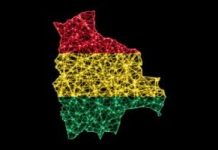Circle, the company responsible for the issuance of USD Coin (USDC), has become the first in the world to comply with the new European MiCA regulation.
The currency is completely in line with what is established by the regulations, which includes a section dedicated specifically to stablecoin.
The news arrived after Circle obtained a very important approval from the French electronic money institution (EME).
This result is reflected in the entire landscape of digital assets in the EU, which can rely on the presence of a reliable, transparent player that complies with the new laws.
In the meantime, the distribution of stablecoin in Europe and around the world still appears particularly polarized, with a focus on those pegged to the US dollar.
All the details below.
The debut of MiCA regulation in Europe and the restrictions for foreign stablecoins like USD Coin (USDC): Circle is the first to comply
On June 30, the MiCA regulatory framework (“Markets in Crypto Assets”) officially came into force across the entire European territory.
The new regulation, approved by the members of the European Parliament in April of last year, defines clear rules for crypto activities in the Union.
No more legislative gray areas with the advent of MiCA, which provides a classification of digital resources with the specification of areas of responsibility for their implementation.
Rules are introduced for all companies issuing electronic money, with a specific focus on companies issuing stablecoin like Circle and Tether.
In detail, the framework distinguishes the issuers of “asset referenced token” (ART) from the issuers of “e-money token” (EMT), indicating different obligations.
The MiCA establishes the tax relevance of exchanges (swaps) between cryptocurrencies and e-money tokens, while exchanges from cryptocurrencies to asset-referenced tokens are not tax relevant.
The new law also stipulates that the only stablecoins that can be traded in the EU are those that meet certain registration requirements with the European Banking Authority (EBA),
The regulation then requires a maximum daily trading limit of 200 million euros according to a quarterly average.
All this ends up harming some issuers like Tether that do not have specific licenses and exceed the predetermined trading threshold.
On the other hand, companies like Circle that deal with the management of USD Coin (USDC) find a strong competitive advantage on the continent.
It is important to highlight that in this initial phase, until December 2024, the full application of the MiCA regulations is not in force. The companies involved are invited to comply and can continue to operate if they request specific authorizations.
HOW MiCA WILL BE IMPLEMENTED:The phase-in period for e-money tokens and asset reference tokens under the Markets in Crypto-Assets Regulation (MiCA) started in June 2023 and will end in July 2026
. During this phase, which lasts until December 2024, the full application of… pic.twitter.com/OgJQPZVQg7
— Mr. Man (@MrManXRP) March 1, 2024
USD Coin (USDC): Circle becomes compliant with the new European MiCA regulation
Circle, which as mentioned manages the issuance of the stablecoin USD Coin (USC), is the first company to comply with the MiCA regulation.
The financial technology company headquartered in Boston, Massachusetts marks a historic milestone by complying with the regulatory framework in record time.
The news arrived after Circle received the approval of the electronic money institution (EME), from the Prudential Supervision and Resolution Authority (ACPR).
The obtaining of the license establishes the full legality of USD Coin (USDC) in the European territory, in compliance with the new regulatory regime.
To tell the truth, even EURC, a stablecoin guaranteed by Circle and based on the replication of the euro’s value, has become compliant with MiCA.
Now USDC and EURC have a significant competitive advantage and can circulate freely in Europe. Some exchange for cryptocurrencies like Uphold and OKX have indeed delisted several competitor stablecoins precisely because they are not compliant with the current regulations.
Regarding the result obtained, Circle co-founder Jeremy Allaire stated the following in a press conference:
“Circle has built a sustainable, compliant, and regulated infrastructure for stablecoins. Our adherence to MiCA, which represents one of the most comprehensive regulatory regimes for crypto-assets in the world, constitutes an important step towards the general acceptance of digital currency”.
Allaire continues to emphasize how close collaboration with French and European regulatory authorities can unlock enormous potential for the cryptocurrency sector.
European users can now officially use Circle Mint in full legality, with instant access to the creation and redeem of USDC and EURC stablecoins.
A great result for the entire stablecoin and crypto sector in Europe
The full compliance of Circle’s USD coin (USDC) and EURC products with the MiCA regulation reflects a significant progress for the entire cryptographic industry.
It is not a milestone for the single company issuing the stablecoin but for the entire European digital financial sector.
As stated by Dante Disparte, Director of Strategy and Head of Global Policy at Circle, the victory is collective:
“As digital resources are increasingly integrated into traditional finance, it is essential to create robust and transparent structures to promote trust and adoption. Today’s announcement reinforces our commitment to building a more inclusive and compliant future for Internet finance.”
In fact, although Circle gains a direct advantage over the other competitors, the entire market grows in terms of reputation and transparency.
After the scandals that occurred in the past with the collapse of various companies in the crypto world, now it is more important than ever to be able to rely on solid institutions that comply with MiCA.
Coralie Billmann, head of the French section of Circle, reiterated how the success in obtaining the license from the ACPR represents a game-changer for the future of the company and the entire panorama of digital assets.
Among the top stablecoins by market capitalization, now only USDC is compliant with MiCA. Circle’s proactive approach in meeting security and transparency standards can inspire other companies to replicate the marked results.
The distribution of stablecoin in the crypto market
The advent of MiCA should favor the emergence of euro-backed stablecoins rather than those based on the US dollar.
In reality, however, the current situation of the stablecoin market still appears excessively disproportionate in favor of those foreign ones pegged to the dollar.
In fact, the share of stable cryptocurrencies on the Ethereum blockchain is 99.32% dominated by the so-called “USD currencies”.
USD Coin (USDC) and Tether dollar (USDT) in turn control over 85% of the share, reflecting a centralized market around a few players.
Outside the context of US stablecoins, euro-pegged coins are the most established among the various existing FIAT currencies.
In this sense EUR is the dominant currency with a market share of 92.8%, followed by AUD with 4% and GBP with 3%.
Once again the products of Circle and Tether, respectively EURC and EURT, dominate the ranking along with the currency EURS launched by Stasis in 2018.
Since the summer of 2021, euro-based stablecoins have seen their presence grow in the crypto world, although they remain within a niche sector.
With the advent of MiCA and the new requirements for e-money token issuers, it is possible that this type of coins will find fertile ground for growth.
The challenge is to reduce the gap with the stablecoins based on the US dollar, and promote the expansion of blockchain technology in Europe.








